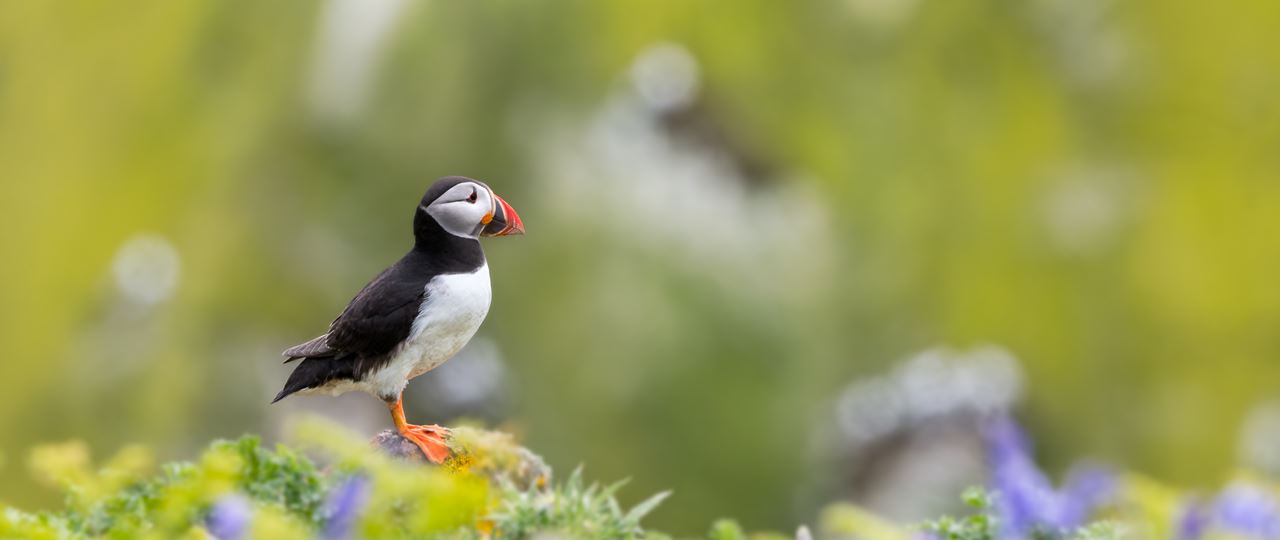Pembrokeshire Wildlife, A Calendar View
Experience a wealth of nature in West Wales

Discover a nirvana of Pembrokeshire wildlife on both land and sea with fascinating natural habitats and countless species of birds, water creatures, insects and land animals.
Nature in Pembrokeshire is omnipresent, it’s everywhere you look with even more to be found in the places you aren’t looking. The wildlife here is vast and varied, so when people ask us when the best time to visit is, it’s a tough question to answer.

To take a calendar view of nature in Pembrokeshire might be helpful to some of you, breaking down what’s going on into more bite-sized chunks may help determine when you’d like to visit. That said, we’re vocal advocates that in order to truly understand the landscape here, you need to make a point of visiting in each of the four seasons.
To get a true “bird's eye” (like what we did there?) overview of wildlife in Pembrokeshire, you can’t limit yourself to just one visit at one time of year. So, tell us about wildlife throughout the year, we hear you say.
All Year Round
A quick glimpse at the nature you’ll spot all year round in this region of Wales includes kingfishers, otters, mallards and moorhens, oystercatchers and cormorants.
Winter Wildlife in Pembrokeshire
January and December are all about gorse and primrose; gorse is something that is seen throughout the year but it’s important to remember there are different types. European gorse starts to bloom in the first month of the year whilst Western gorse starts to die off in the last.

February is when gannets begin nesting at their colony on Grassholm Island and kittiwakes return to the land to breed, whilst March is famously known for vibrant yellow daffodils erupting across the hedgerows and fields. The third month of the year is also when you’ll start to see snowdrops blossom and seals take to the coastline to moult their winter coasts.
Pembrokeshire's Nature in Spring
Swallows and housemartins are often seen flitting through the skies in this month and the next, with puffins also returning to the region of Skomer in late April. Peregrine falcons begin their mating rituals, daisy flowers in the gardens and bluebells start to bloom, though they really come into their own in May.
May and June see the scenes of Pembrokeshire awash with fresh new colour; picture thrift and pink campions, foxgloves and knapweed painting the land. Bosherston’s popular Lily Ponds come into full bloom in June whilst basking sharks swim the shores and guillemots start to hatch - head to the Elegug Stacks for these latter birds. This month of the year is a busy one, it’s peak puffin-spotting season and the climax of porpoise breeding.
Summer Wildlife in Wales
In both July and August, catch many sightings of the new class of gannets. These summer months are also a great time of year to still see puffins, kittiwakes, basking sharks and foxgloves as well as rarer birds like chough in the Marloes peninsula.
Nature in Pembrokeshire in Autumn
September is when the Pembrokeshire coastline becomes a haven for Atlantic Grey Seals and their newborn pups; the babes dot the shorelines in their fluffy white fur whilst the parents fish for food until the younger generation are ready to swim. This month through to the end of October is when Heather takes over the landscape and manx shearwater fledglings emerge.
November is the month for starlings and wow, their displays are something special here. Top locations to sightsee these orchestras of blackbirds take to the sky include Plumstone Mountain near Camrose, the Preseli Hills, Slebech and the Minwear Woods.

Coastal Cottages Holiday Cottages in West Wales
Our West Wales holiday cottages are each perfectly placed for exploring the magnificent Pembrokeshire Coast with its beautiful beaches, intricate Coast Path and array of attractions. Browse our holiday rentals in West Wales to stay in Pembrokeshire or set your sights on the neighbouring counties of Carmarthenshire and Ceredigion.














